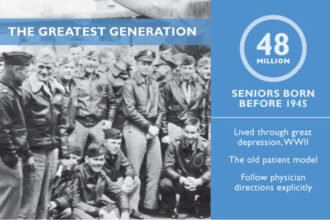Most people I know have at least a passing interest in LinkedIn. And I belong to a few lists on the social media platform aimed at business. One of the questions posted to invite comments involves telemedicine in the Emergency Department.
Juli Stockberger asked, “Should you place a PCP via teleconsult cubicle in the ED waiting area?” Because many people use the emergency room as their primary care provider anyway, it makes sense to do some pre-triage work with the folks who walk in with runny noses, coughs and earaches.
Most people I know have at least a passing interest in LinkedIn. And I belong to a few lists on the social media platform aimed at business. One of the questions posted to invite comments involves telemedicine in the Emergency Department.
Juli Stockberger asked, “Should you place a PCP via teleconsult cubicle in the ED waiting area?” Because many people use the emergency room as their primary care provider anyway, it makes sense to do some pre-triage work with the folks who walk in with runny noses, coughs and earaches.
I’ve blogged on something similar in the past. Remember the H1N1 scare in 2009? I sat through presentations that warned there might not be enough vaccine ready in time to innoculate caregivers. My thinking was why not set aside a room off the ER waiting room for patients who might have the Avian Flu and let them be seen by doctors and nurse practitioners via a mobile telemedicine station. Not to say that doctors and nurse practitioners are more important than RNs and LPNs, but in a pandemic you want to protect your higher level providers from contracting what might have been a serious flu virus.
Already, a lot of emergency departments have two waiting rooms: one for the obviously sick (the sneezers and the coughers) and one for patients with other physical ailments. The telemedicine area might provide an opportunity to intervene more quickly in the routine colds and flu and send these folks on their way with medical advice and/or prescriptions. With the rapid move towards Accountable Care Organizations, a hospital could have a stable of primary care providers who, at various times, would simply sign on to the hospital’s video network from their offices and see these patients telemedically. A well-inoculated nurse could act as the “patient presenter,” providing the PCP with vital signs and helping the remote practitioner conduct a physical exam.
An emergency department is a valuable community resource – too valuable to use to treat patients with the common cold.
One of the people commenting on Juli’s question said that something similar should be in place to prevent emergency medical transports of people to the emergency room for non-emergent care. AMEN to that! Curt Bashford, who seems to know a lot about this problem, says “frequent fliers” will often call an ambulance, knowing that the emergency medical service “is stuck in the current paradigm of fee for transport and liability for non-transport.” Given the chance, some people will “game” the system. My wife’s nephew who is an EMT, has related stories about the ridiculous trips his ambulance crew made. One woman called for an emergency transport because she needed aspirin for a headache. They had to drive her to the hospital emergency room for that.
I have to mention that GlobalMed did work with Cincinnati Children’s Hospital on a very portable mobile telemedicine station that was used by ambulance crews in the transport of pediatric patients. TransportAV allowed ED staff to see and hear the patient at first touch, when they were first placed on the gurney. A grant and hospital support funded 300 trips over a period of about 18 months. Dr. Hamilton Schwartz presented a paper on the program at ATA2012. I plan to provide more details about this in the very near future, but it was successful in a number of cases. When it wasn’t used, it was because no practitioner was available.






